
The terrible Red Army disaster that opened the road to Moscow for the Nazis
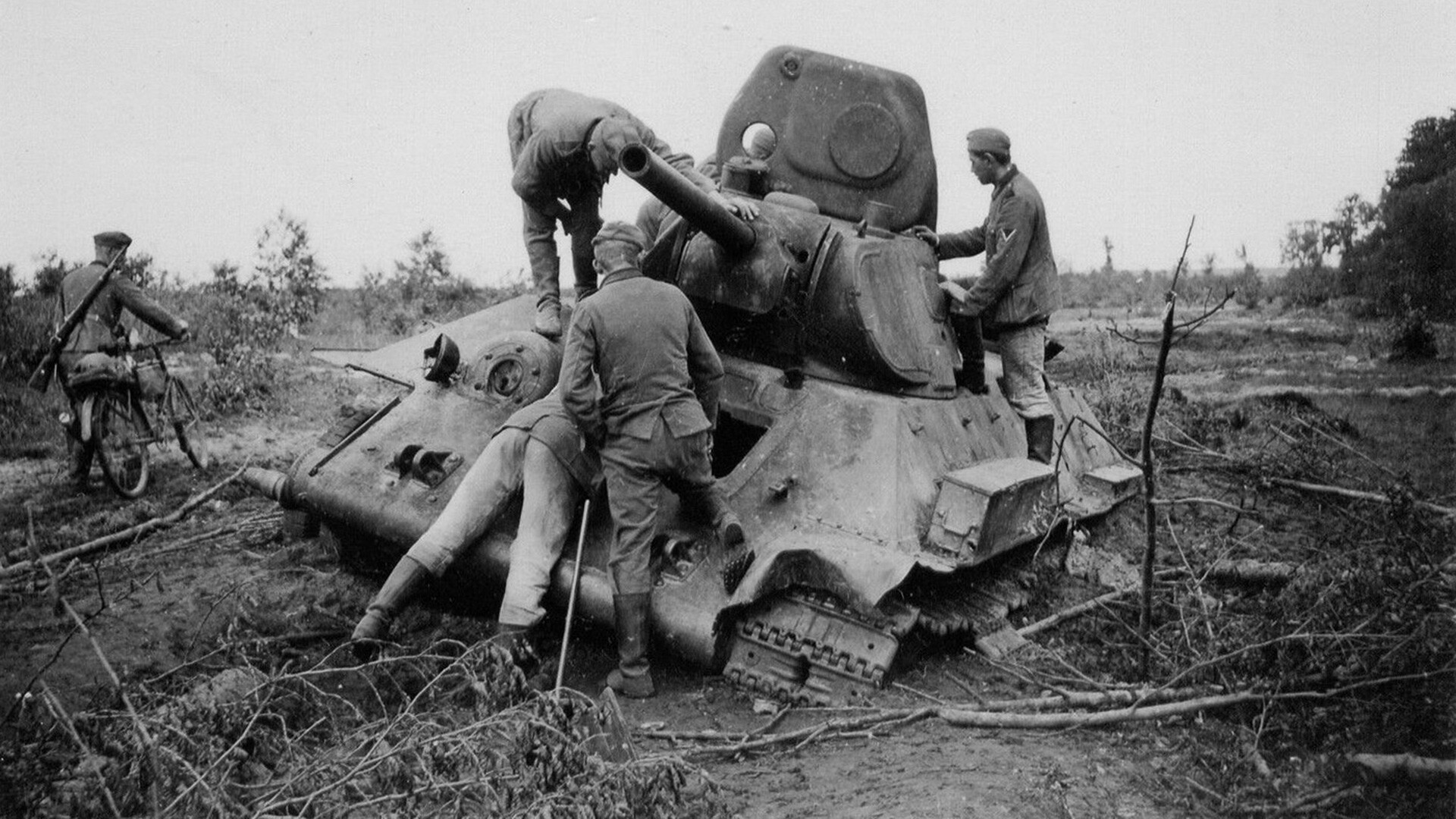
In early October 1941, the Red Army met with one of the worst defeats it was to suffer in the whole of World War II. As a result of the disaster that befell Soviet troops at Vyazma and Bryansk, the Wehrmacht was able to break through towards a practically defenseless Soviet capital.
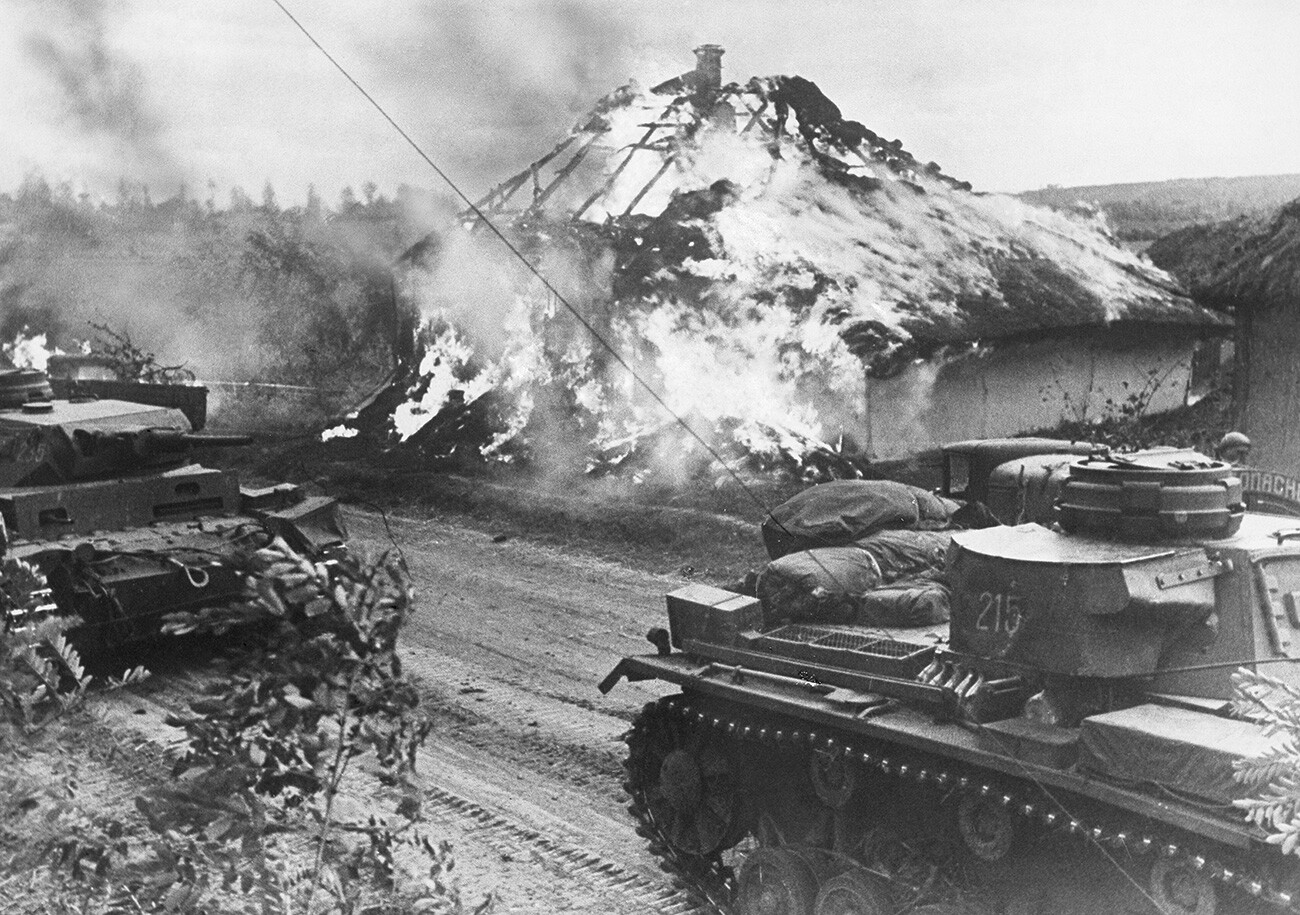 German tanks passing through a Soviet village, October 1941.
German tanks passing through a Soviet village, October 1941.
The Germans planned to begin the large-scale advance on Moscow known as ‘Operation Typhoon’ from starting positions located 350-600 km from the city. There, they concentrated a grouping of 1.8 million men, which represented just a little under half their forces on the Soviet-German front.
Three of their four Panzer groups (1,700 tanks and self-propelled guns) were deployed to the combat zone. Air support was provided by the 2nd Air Fleet, which had almost 1,400 aircraft at its disposal.

Troops of the Western, Reserve and Bryansk fronts, totalling around 1.2 million men, stood between the Wehrmacht and Moscow. They had around one thousand tanks and self-propelled guns and also 1,370 aircraft, the majority of which, however, were obsolete models.
The Soviet troops needed to cover a 600 km-long strip of territory. They made strenuous preparations to repel the offensive, but they did not have time to set up robust defensive lines before the start of ‘Operation Typhoon’. In addition, military formations had been seriously battle-scarred in the difficult Battle of Smolensk and were experiencing severe shortages of manpower and weapons.
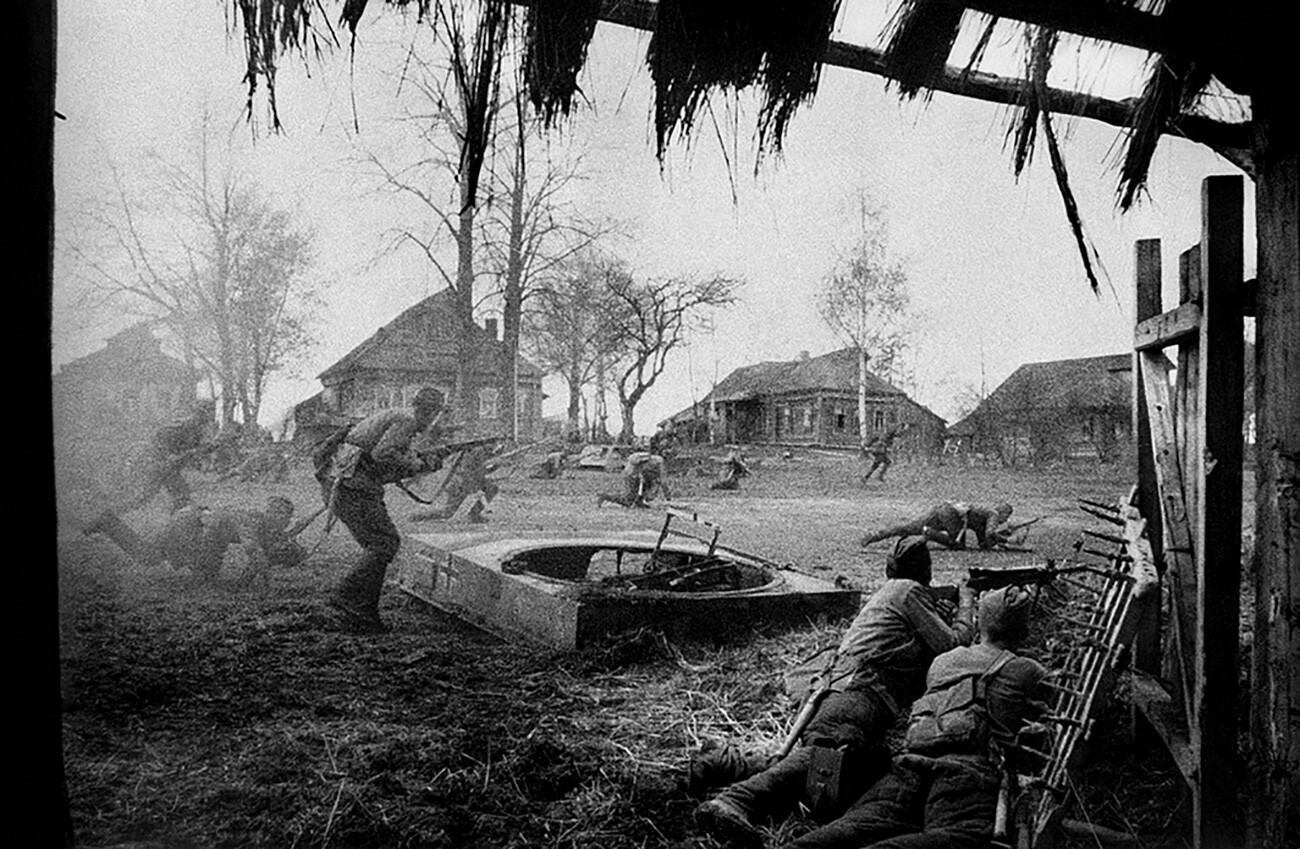 Soviet infantry, October 1941.
Soviet infantry, October 1941.
On September 30, General Heinz Guderian's 2nd Panzer Group went on the offensive against the positions of the Bryansk Front. On October 2, the main forces of Army Group Center attacked the Western and Reserve fronts in force.
Contrary to the expectations of the Soviet command, the Wehrmacht did not start advancing along a line following the Minsk-Moscow highway via Vyazma, which was the shortest distance to the Soviet capital and where the sturdiest defenses had been set up. Having carried out careful reconnaissance, the Germans dealt several powerful strikes at the boundaries between the Soviet armies, including in sectors regarded as heavy-going for armor.
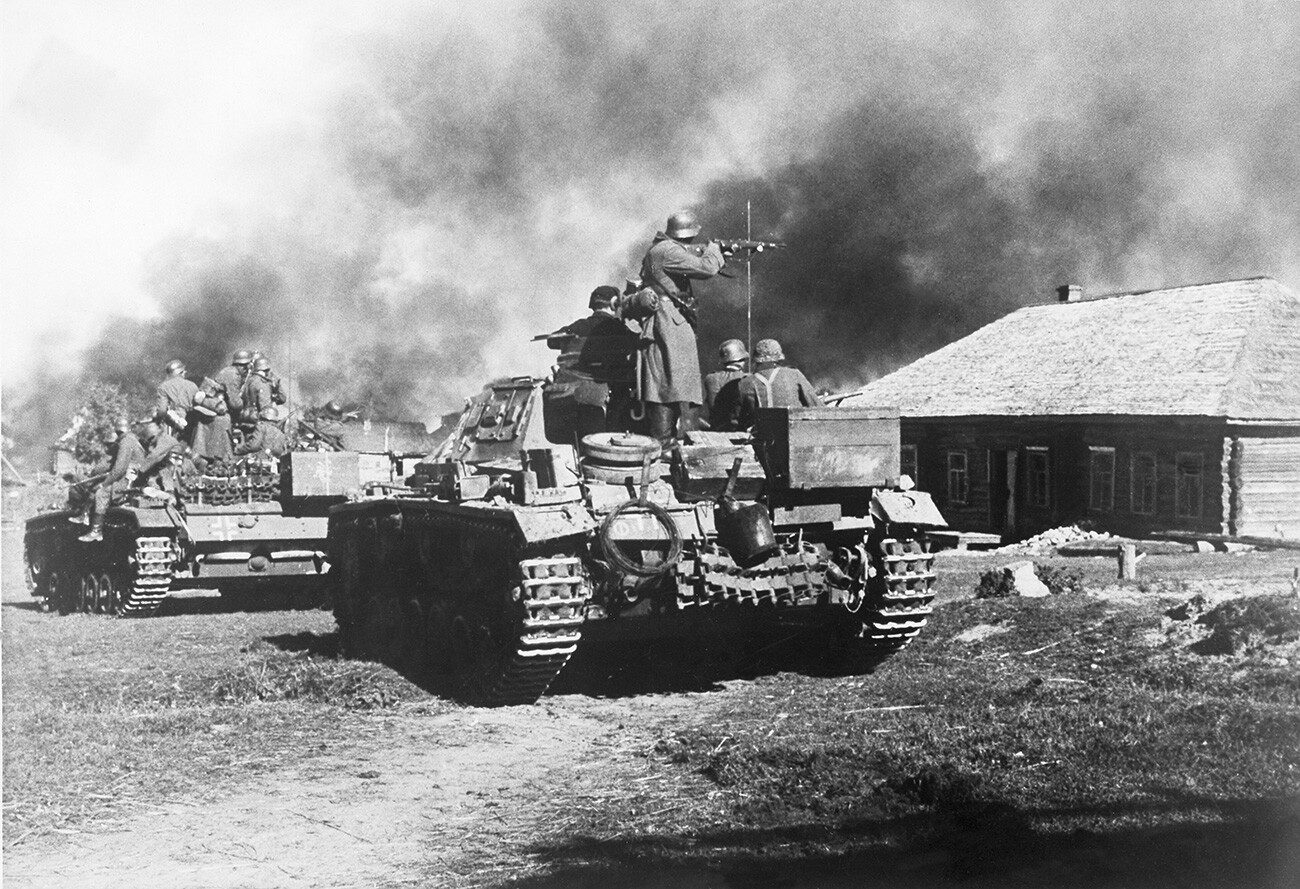
With effective air support and superiority in manpower and tanks, the German strike groups successfully broke through the Soviet defenses and rapidly began to press their offensive. They repelled poorly-organized Red Army counter-attacks to good effect, threatening to reach the rear of the troops of all three fronts.
"The enemy continues everywhere to hold unattacked sectors of the front, as a result of which a deep encirclement of these enemy groups is in prospect," Franz Halder, the chief of General Staff of the German Army High Command, noted in his diary.
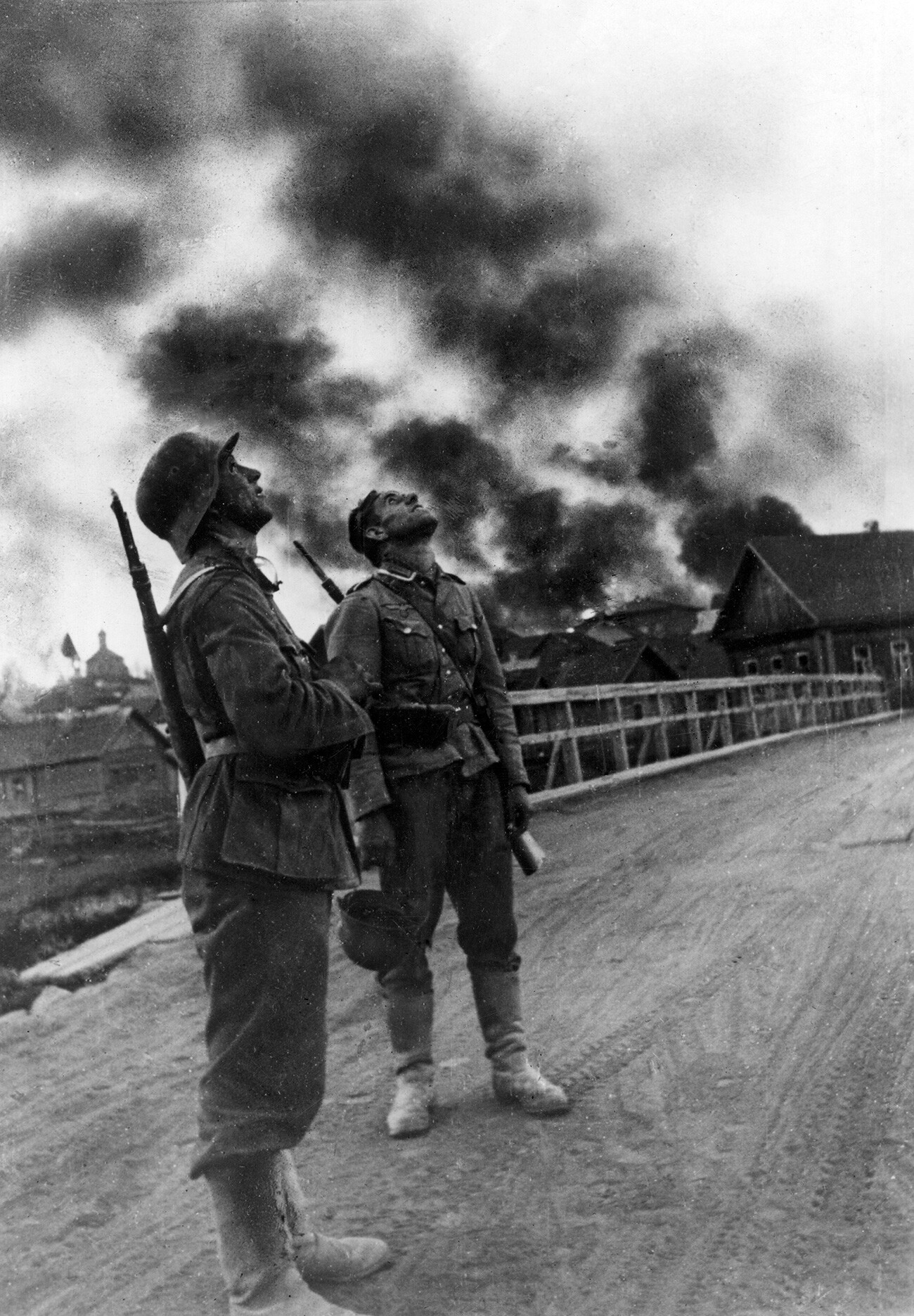 In the Vyazma area, two German infantrymen following an aerial battle between opposing fighters.
In the Vyazma area, two German infantrymen following an aerial battle between opposing fighters.
Soviet commanders did not immediately realize the scale of the approaching disaster. For instance, orders issued by 19th Army commander General Mikhail Lukin included a phrase noting that "groups of delinquent sub-machine gunners" had infiltrated the rear of his troops. In reality, his army was already being surrounded by two full-strength enemy Panzer divisions.
Displaying poor coordination among themselves, the forces of three fronts failed to hold back the breakthrough operations. At the same time, fearing accusations of cowardice and alarmism, armies and fronts commanders reported to Moscow that they were in control of the situation, overall.
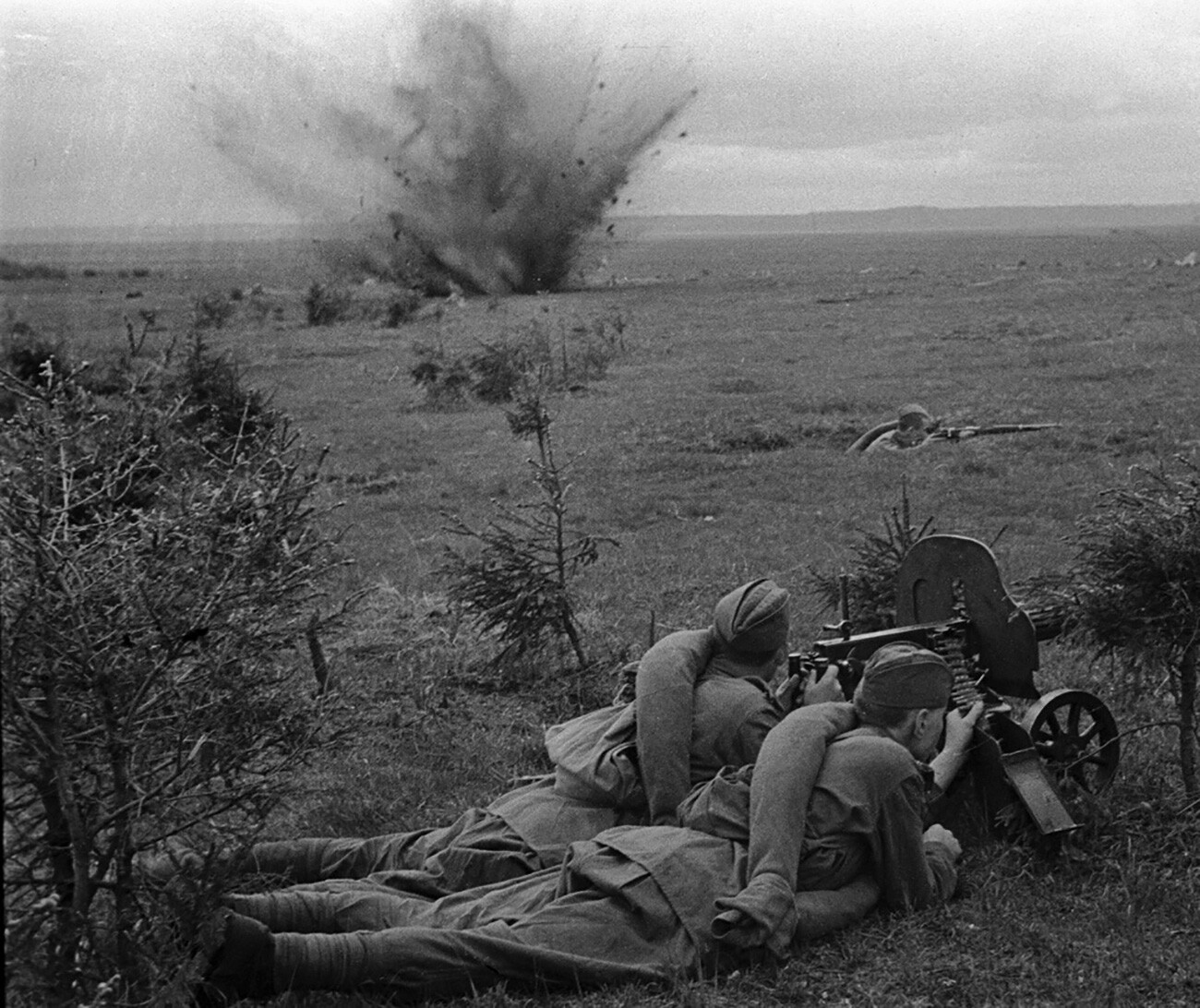
In consequence, for a long time, the Supreme High Command lacked a precise understanding of the crisis that was brewing in the combat zone. It was only on the night of October 5-6, when time had already been lost, that it ordered the troops to begin a general withdrawal to new defensive lines.
On the same day, the German 17th Panzer Division and units of the German 2nd Army, which had been advancing towards each other, linked up near the towns of Bryansk and Karachev, encircling the main forces of the Bryansk Front.
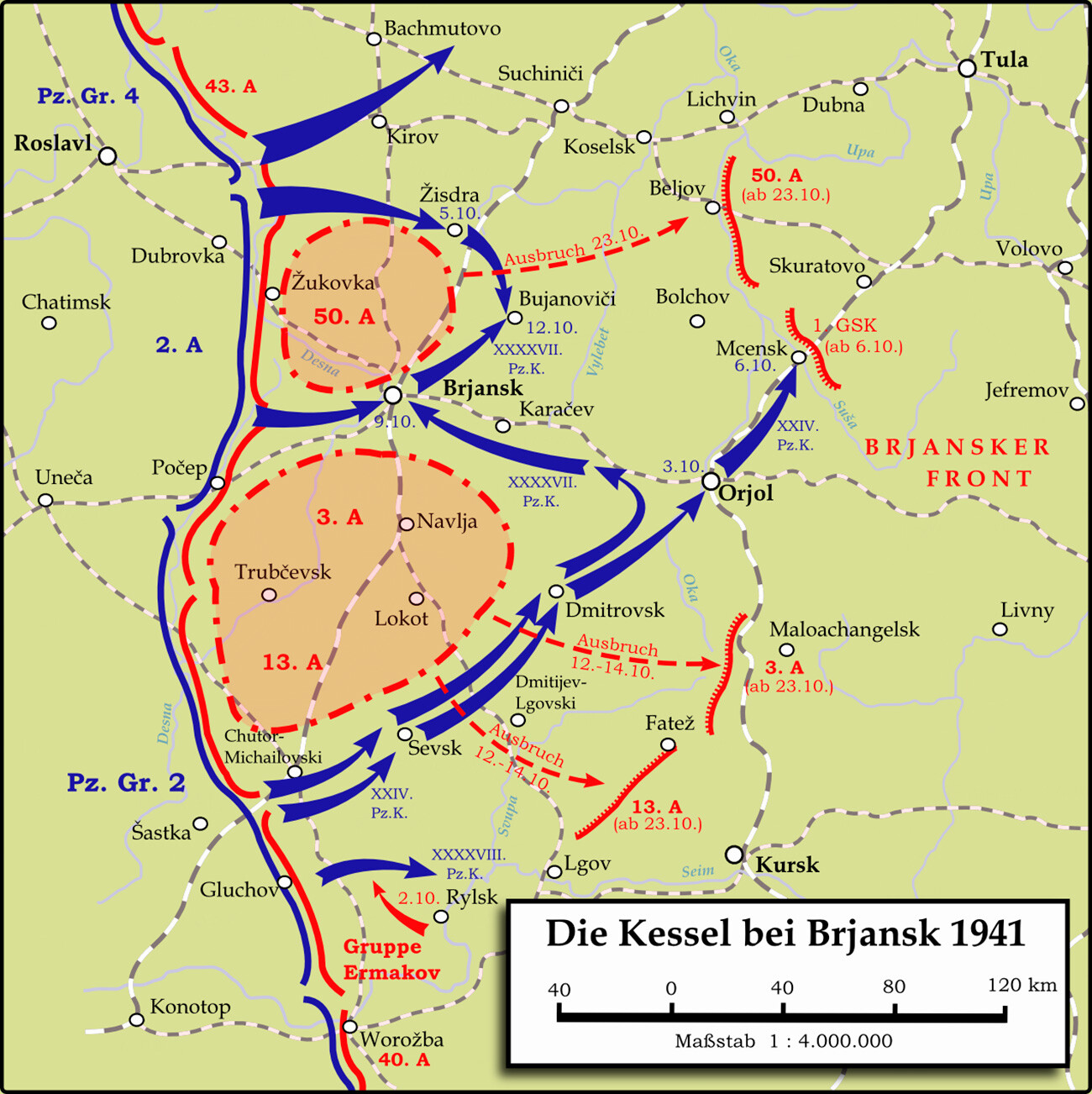
Spearheads of the German 3rd and 4th Panzer Groups met near Vyazma on October 7. Significant forces of four armies of the Soviet Western and Reserve fronts, as well as the operational group of General Ivan Boldin that had been specially formed to eliminate enemy breakthrough attempts, found themselves trapped inside the "pocket".
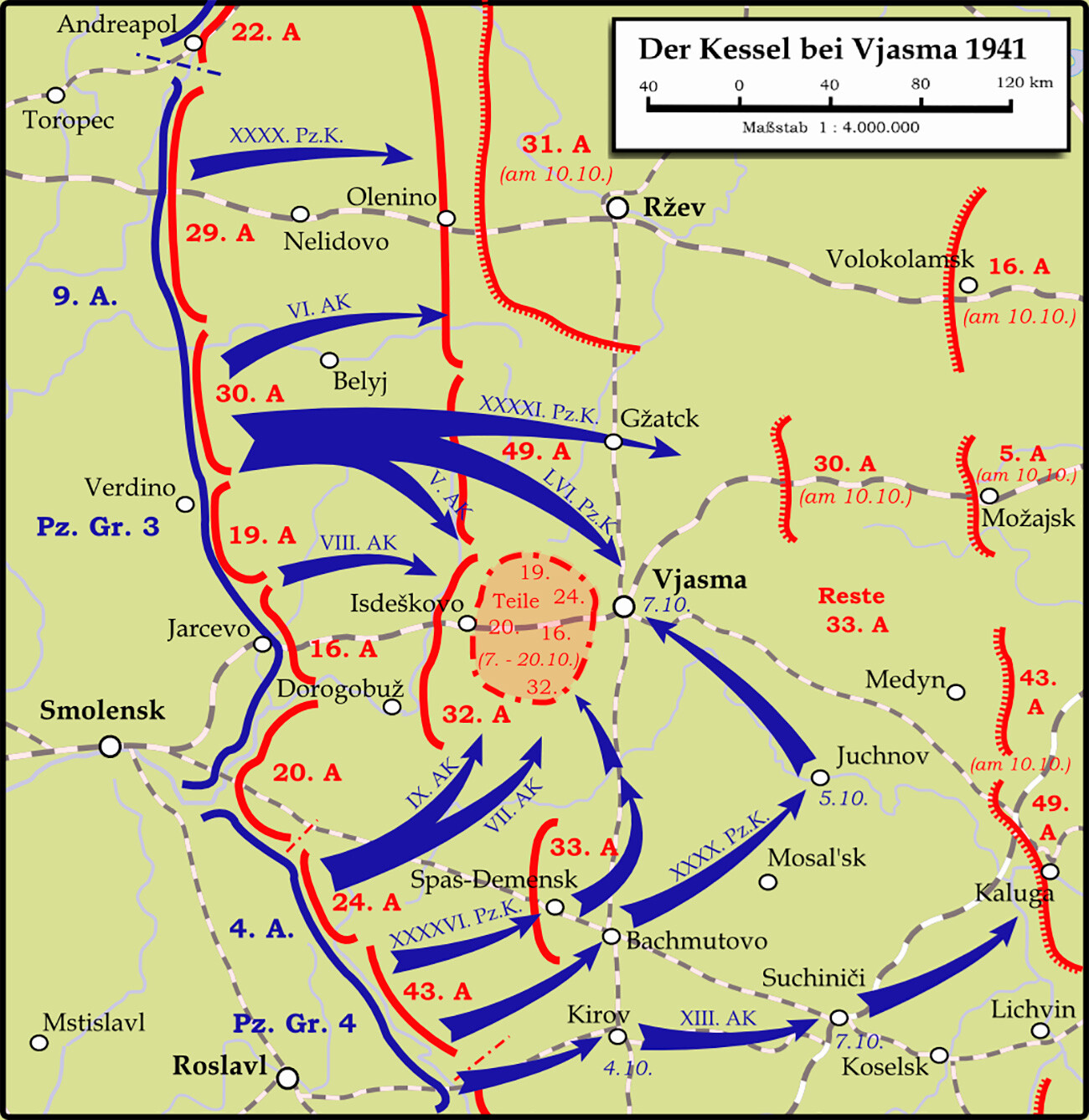
In the days that followed, the encircled Soviet troops made numerous attempts to break out of the trap. Moreover, their reserves of ammunition, fuel and food were rapidly dwindling, while the German onslaught only increased.
In the early stages, whole divisions tried to fight their way out of the "pockets", sometimes losing up to 90 percent of their manpower. Subsequently, only small groups and individual servicemen made attempts to flee to their own side.
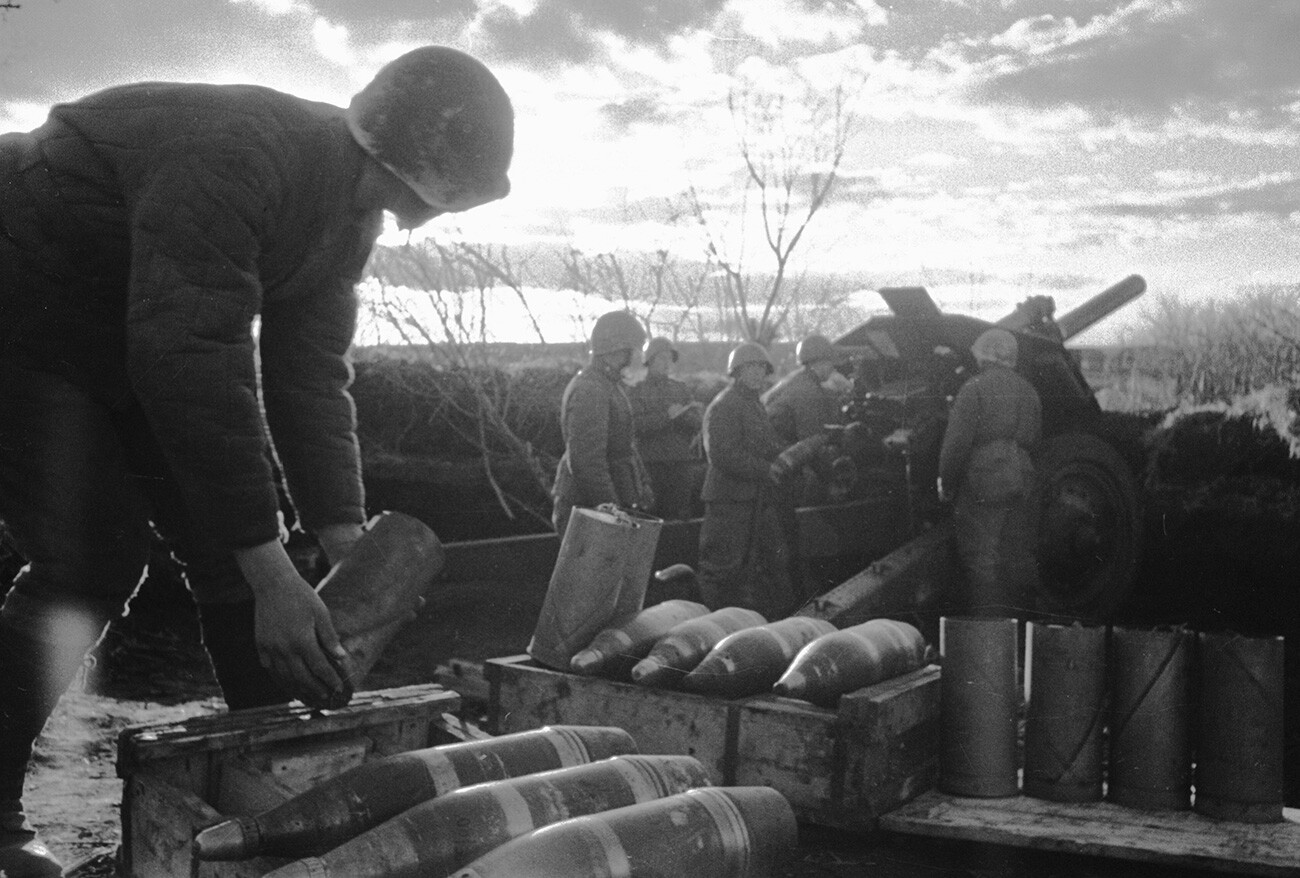 Soviet troops fighting in the Vyazma "pocket".
Soviet troops fighting in the Vyazma "pocket".
Alexander Pochuyenkov of the 50th Rifle Division recalled making his way to Soviet positions along with a fellow serviceman: "To avoid being noticed by the Germans, we would hide out somewhere by day and then walk on by night… We would enter villages, ask for somewhere to sleep, hole up there and then continue on our way… Frequently, we walked hungry and exhausted, scarcely able to move our legs. But, we would regain our strength and walk on. We ate whatever came to hand… We asked everyone just one question: "The road to Moscow! How do we get there?"
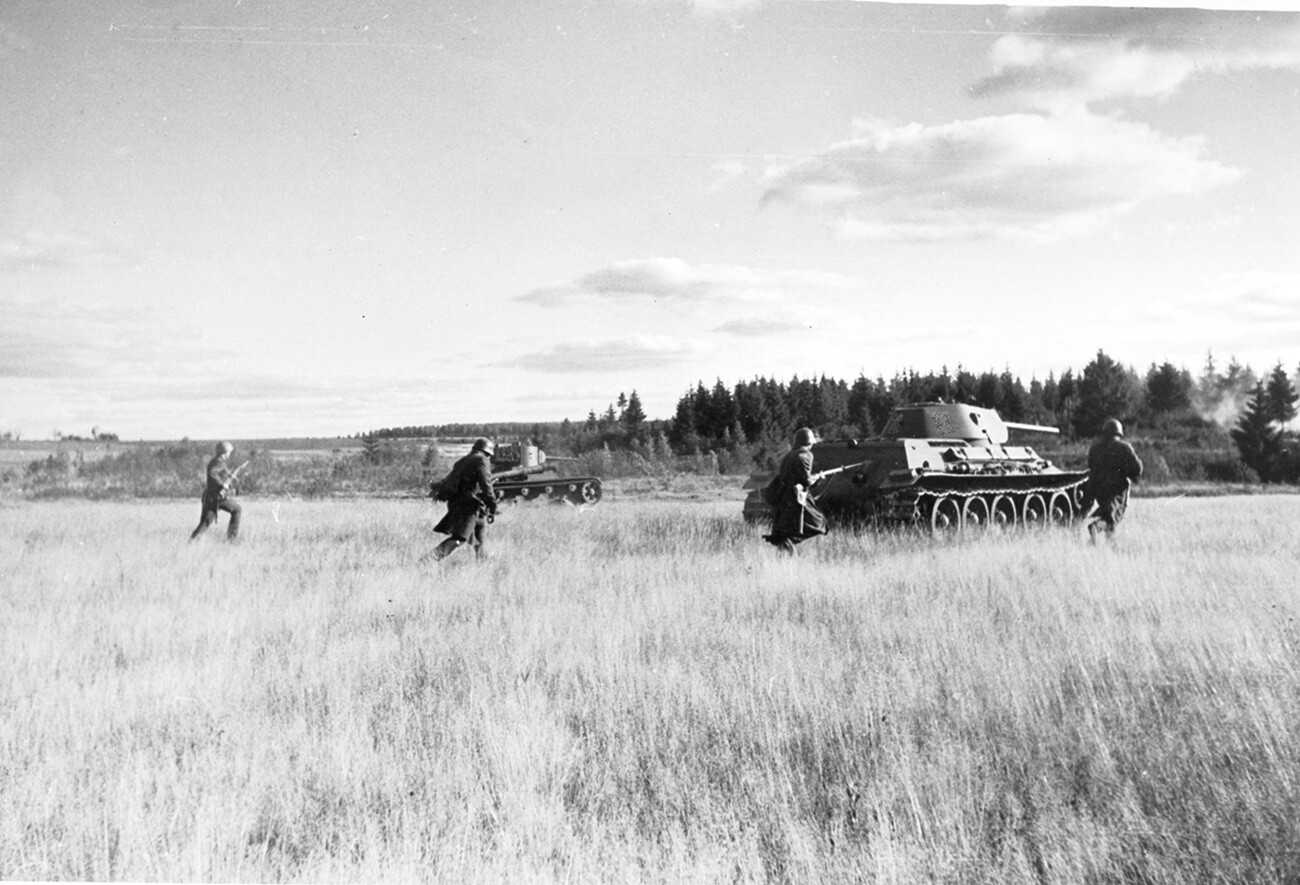 Soviet attack.
Soviet attack.
It is impossible to count the precise losses the Red Army sustained in the "pockets" in early October 1941. Hundreds of thousands of servicemen died, went missing in action or were taken prisoner. Whole military formations simply ceased to exist.
The destruction of such a large military grouping created a gigantic gap in Soviet defensive dispositions and effectively cleared the way for the Germans to an almost undefended Moscow. All available forces – few as they were – had to be thrown into the lines of defense, including cadets from military academies outside Moscow.
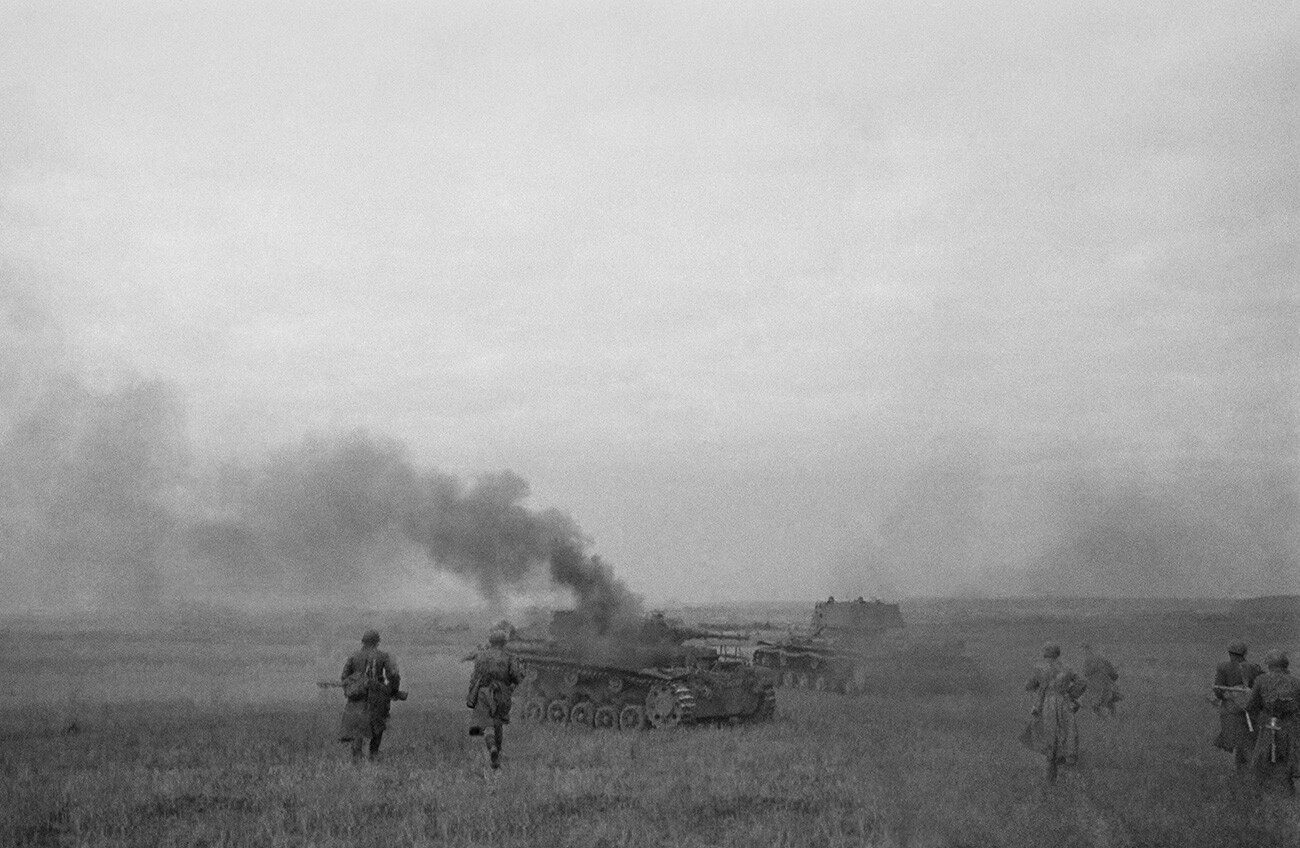 Troops of the Bryansk front.
Troops of the Bryansk front.
General Georgy Zhukov was recalled by Stalin from besieged Leningrad to take command of the remains of the fronts that had evaded encirclement. Organizing the defense of the capital, restoring the combat effectiveness of the troops and replenishing them with the fresh reserves arriving from distant parts of the country – all this required time.
And this was time that the general was granted by the troops surrounded at Vyazma and Bryansk, who, with their desperate and heroic resistance, tied down several dozen German divisions until mid-October.
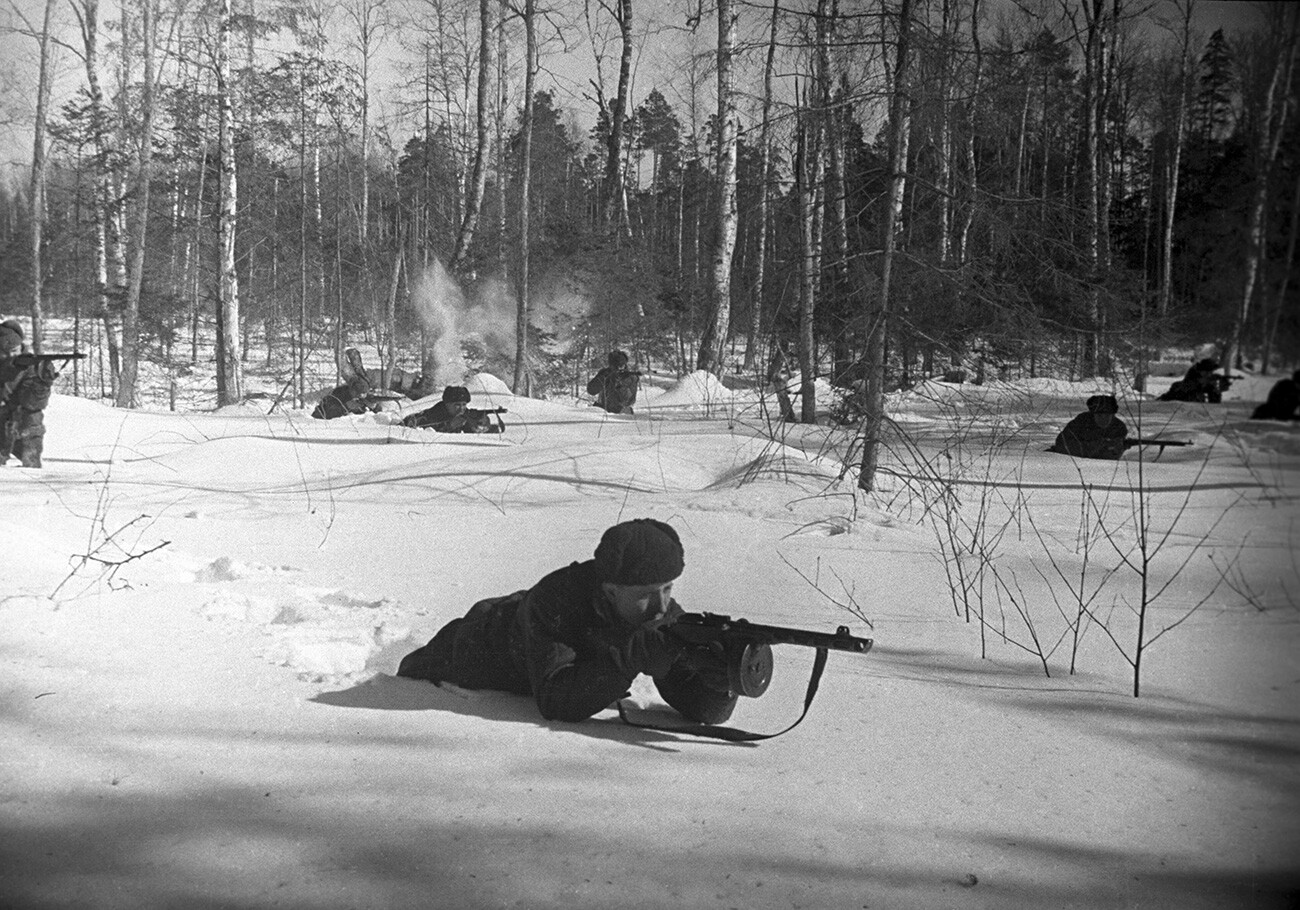 Soviet troops near Moscow, November 1941.
Soviet troops near Moscow, November 1941.












